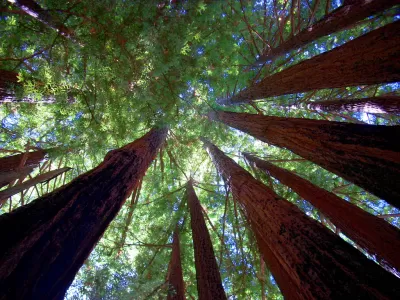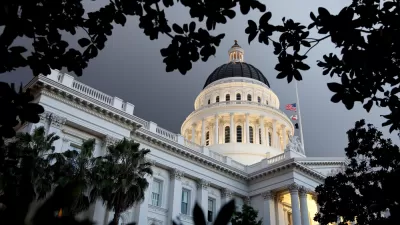The new study determined that carbon forestry offsets, which allow polluters to reduce carbon emissions out-of-state rather than in impacted communities near large pollution sources, is a beneficial climate program.

A controversial California climate program, condemned by environmental justice advocates because it allows large emitters, like oil refineries, to spend funds out-of-state rather than reducing emissions in impacted communities surrounding their facilities, was found to have a positive impact on mitigating climate change.
“Offsets are loopholes for our largest corporate polluters,” said Amy Vanderwarker, co-director of the , in a March Los Angeles Times article on the program.
The offset program is part of California's cap-and-trade program, the only state-run carbon trading program in the nation, that expires at the end of 2020. Offsets were eliminated from SB 775, an unsuccessful bill to continue the program through 2030, but were included in AB 398, which passed the legislature last month with bipartisan support and was signed by Gov. Jerry Brown.
"According to the researchers’ findings, that program is protecting imperiled forests and preventing the carbon they store from being released into the atmosphere," reports energy & environment contributor Chelsea Harvey for The Washington Post.
"Forest offsets, which account for the majority of offsets in California’s cap and trade market, involve forest owners changing the way they manage their land so trees will store more carbon," reports Rob Jordan for the Stanford News on the research published August 14 in the journal, Frontiers in Ecology and the Environment.
This could involve cutting trees less often, reforesting previously forested land or improving forests through various management practices. Under any scenario, professional foresters vet the changes to ensure they are effective.
"The new study suggests some of the concerns surrounding the program may not actually be cause for worry — at least for now," adds Harvey.
Offsets are not only controversial, they are “a super complicated thing to get right,” explains Michael Wara, a former climatologist and environmental law expert at Stanford University who was not involved with the new research, writes Harvey.
“In some sense, forest carbon is trading one kind of co-benefit for another kind of co-benefit,” Wara said. “It’s not strictly a benefit, it’s a trade-off, because we’re going to burn more carbon in California in exchange for storing more carbon elsewhere.”
The new cap-and-trade legislation is sensitive to the concerns of environmental justice advocates. It establishes a "Compliance Offsets Protocol Task Force to provide guidance to the state board in approving new offset protocols ... for the purposes of increasing offset projects with direct environmental benefits in the state while prioritizing disadvantaged communities, Native American or tribal lands, and rural and agricultural regions."
Hat tip to James Brasuell.
FULL STORY: A controversial California effort to fight climate change just got some good news

Planetizen Federal Action Tracker
A weekly monitor of how Trump’s orders and actions are impacting planners and planning in America.

San Francisco's School District Spent $105M To Build Affordable Housing for Teachers — And That's Just the Beginning
SFUSD joins a growing list of school districts using their land holdings to address housing affordability challenges faced by their own employees.

The Tiny, Adorable $7,000 Car Turning Japan Onto EVs
The single seat Mibot charges from a regular plug as quickly as an iPad, and is about half the price of an average EV.

With Protected Lanes, 460% More People Commute by Bike
For those needing more ammo, more data proving what we already knew is here.

In More Metros Than You’d Think, Suburbs are Now More Expensive Than the City
If you're moving to the burbs to save on square footage, data shows you should think again.

The States Losing Rural Delivery Rooms at an Alarming Pace
In some states, as few as 9% of rural hospitals still deliver babies. As a result, rising pre-term births, no adequate pre-term care and "harrowing" close calls are a growing reality.
Urban Design for Planners 1: Software Tools
This six-course series explores essential urban design concepts using open source software and equips planners with the tools they need to participate fully in the urban design process.
Planning for Universal Design
Learn the tools for implementing Universal Design in planning regulations.
Smith Gee Studio
City of Charlotte
City of Camden Redevelopment Agency
City of Astoria
Transportation Research & Education Center (TREC) at Portland State University
US High Speed Rail Association
City of Camden Redevelopment Agency
Municipality of Princeton (NJ)



























